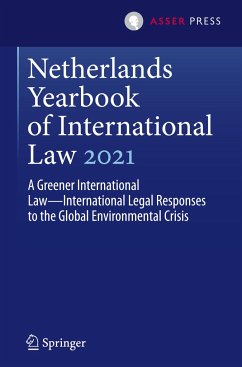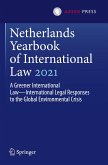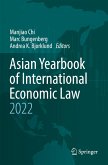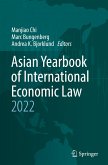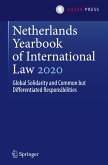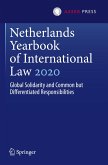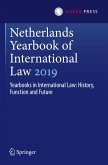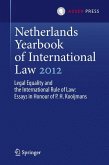This book engages with international legal responses to the global environmental crisis.
Humanity faces a triple planetary crisis, consisting of the interlinked problems of climate change, depletion of biological diversity and pollution.The chapters in this volume of the Netherlands Yearbook of International Law address important questions of how and to what extent these environmental concerns have been integrated into international law, who or what drives these developments, and what all of this tells us about international law's ability to tackle the challenges that a deteriorating environment brings for the future of life on Earth.
The strength of the volume is that it brings together a wide range of perspectives on the 'greening' phenomenon in international law. It includes perspectives from international environmental law, human rights law, investment law, financial law, humanitarian law and criminal law. Moreover, it raises important questions regarding the validity of the predominant approach in international law to (the protection of) nature. By providing such a wide range of perspectives on international legal responses (or lack thereof) to the environmental crisis, the volume seeks to engage scholars and practitioners from a variety of disciplines. It invites readers to compare the state-of-the-art across disciplines and to reflect on ways to strengthen international law's responses to the environmental crisis. Furthermore, as has become standard for the Netherlands Yearbook of International Law, the second part consists of a section on Dutch practice in international law.
The Netherlands Yearbook of International Law was first published in 1970. It offers a forum for the publication of scholarly articles in a varying thematic area of public international law.
Chapter 3 is available open access under a Creative Commons Attribution 4.0 International License via link.springer.com.
Humanity faces a triple planetary crisis, consisting of the interlinked problems of climate change, depletion of biological diversity and pollution.The chapters in this volume of the Netherlands Yearbook of International Law address important questions of how and to what extent these environmental concerns have been integrated into international law, who or what drives these developments, and what all of this tells us about international law's ability to tackle the challenges that a deteriorating environment brings for the future of life on Earth.
The strength of the volume is that it brings together a wide range of perspectives on the 'greening' phenomenon in international law. It includes perspectives from international environmental law, human rights law, investment law, financial law, humanitarian law and criminal law. Moreover, it raises important questions regarding the validity of the predominant approach in international law to (the protection of) nature. By providing such a wide range of perspectives on international legal responses (or lack thereof) to the environmental crisis, the volume seeks to engage scholars and practitioners from a variety of disciplines. It invites readers to compare the state-of-the-art across disciplines and to reflect on ways to strengthen international law's responses to the environmental crisis. Furthermore, as has become standard for the Netherlands Yearbook of International Law, the second part consists of a section on Dutch practice in international law.
The Netherlands Yearbook of International Law was first published in 1970. It offers a forum for the publication of scholarly articles in a varying thematic area of public international law.
Chapter 3 is available open access under a Creative Commons Attribution 4.0 International License via link.springer.com.

